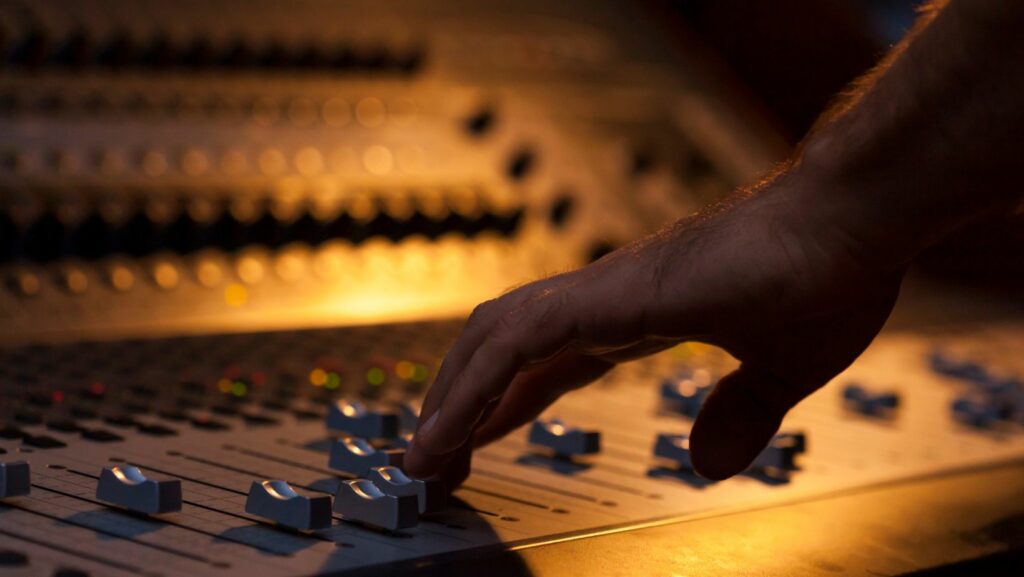Sound engineering is the art and science of capturing, manipulating, and reproducing audio, forming the backbone of the music, film, and broadcast industries. Sound engineers play a crucial role in ensuring that every note, word, and sound effect reaches audiences with clarity and precision, whether in a live concert or a studio recording.
At its core, sound engineering combines understanding acoustics, mastering equipment, and utilizing software to shape soundscapes. Each tool, from microphones to mixing consoles, has a specific purpose in the audio chain. A sound engineer’s expertise lies in balancing these elements to produce high-quality sound, making it essential for newcomers to grasp the basics. This field blends creativity and technical skill, presenting endless possibilities for audio enthusiasts.
Sound Engineering Basics

Sound engineering encompasses complex processes aimed at achieving optimal audio quality across various mediums. Professionals in this field leverage technical skills and artistic intuition to capture and shape sound.
Proficiency in acoustics is crucial, as sound engineers need to understand how sound waves interact with different environments and materials, enabling them to manipulate sound for clarity.
Key components include:
- Microphones: Capture sound and convert it into electrical signals.
- Mixing Consoles: Allow for the adjustment and balancing of audio elements.
- Digital Audio Workstations (DAWs): Facilitate advanced sound editing and layering, integral to the engineer’s toolkit.
Software also plays a significant role in sound processing. Engineers utilize various plugins and applications to enhance and modify sound characteristics, offering flexibility and precision.
The dynamic nature of sound engineering requires continuous learning, as technological advancements and changing industry standards compel sound engineers to stay updated on the latest tools and practices. While technical skills are essential, creativity is what distinguishes exceptional sound engineers, enabling them to craft experiences that resonate with audiences.
Key Principles of Sound Engineering
Mastering key principles is vital for creating high-quality audio:

- Clarity and Precision: Engineers ensure accurate audio capture, minimizing noise or distortion through a deep understanding of acoustics.
- Equipment Selection: Choosing the right microphones, mixing consoles, and DAWs based on project requirements is critical. For instance, condenser microphones excel in studio settings, while dynamic microphones are better suited for live performances.
- Signal Flow: Managing how audio signals travel through equipment affects the final output. Effective signal flow design helps minimize interference and preserve audio quality.
- Balancing Technology and Creativity: Sound engineers blend technical knowledge with artistic insight to enhance the auditory experience, using software to modify sound characteristics.
- Adaptability: Staying current with technological advancements ensures sound engineers remain competitive and can deliver relevant results.
By mastering these principles, sound engineers create immersive auditory experiences across various media.
Essential Sound Equipment and Tools
Effective sound engineering relies on key equipment:

- Microphones: Condenser microphones are sensitive and ideal for studio recordings, while dynamic microphones handle high sound pressure, making them suitable for live settings.
- Mixing Consoles: These allow engineers to blend multiple audio signals, offering control over volume, tone, and spatial positioning.
- Digital Audio Workstations (DAWs): Platforms like Pro Tools and Ableton Live facilitate audio editing and mixing, providing essential tools for sound manipulation.
- Studio Monitors: Designed for accurate audio reproduction, they help engineers evaluate sound quality, unlike consumer speakers.
- Audio Interfaces: Connect microphones and instruments to computers, converting analog signals to digital formats with low latency and high fidelity.
- Cables and Connectors: Balanced cables (e.g., XLR, TRS) reduce noise, ensuring clean audio signals.
- Software Plugins: Enhance sound with effects like reverb, compression, and equalization, offering sound engineers creative flexibility.
The Role of a Sound Engineer
Sound engineers are essential in producing high-quality audio for various projects. Their responsibilities include:

- Managing Equipment: Choosing suitable tools based on project needs, like selecting condenser microphones for studios.
- Optimizing Signal Flow: Designing efficient paths for audio signals to maintain sound quality.
- Balancing Technical and Creative Aspects: Combining technical skills with artistic intuition to enhance the auditory experience.
- Adapting to Technological Advancements: Updating skills to incorporate new tools and techniques.
- Collaborating with Creative Teams: Working closely with producers and musicians to translate creative visions into technical realities.
By blending these responsibilities, sound engineers create exceptional audio experiences across media formats. Their expertise in equipment management, signal flow optimization, and collaboration makes them vital players in any audio production team.
Sound Engineering Techniques
Sound engineering blends technology and creativity, offering endless possibilities for crafting exceptional auditory experiences. Mastery of core principles and techniques empowers sound engineers to navigate audio production complexities with confidence.
Embracing both traditional tools and cutting-edge software allows them to enhance audio characteristics for diverse media formats. Continuous learning ensures they remain at the forefront of industry developments, bringing artistic visions to life and creating captivating experiences for audiences worldwide.

